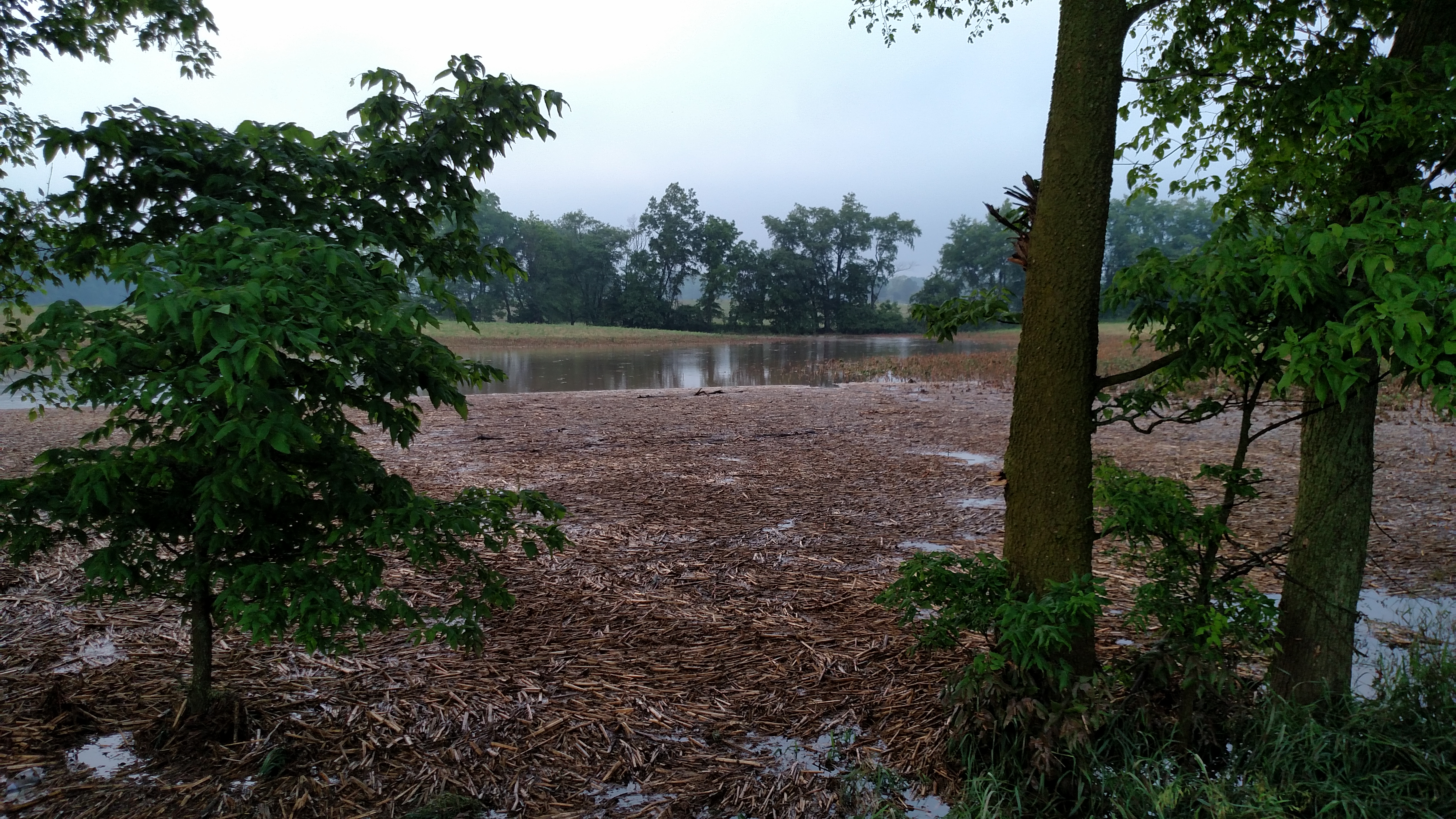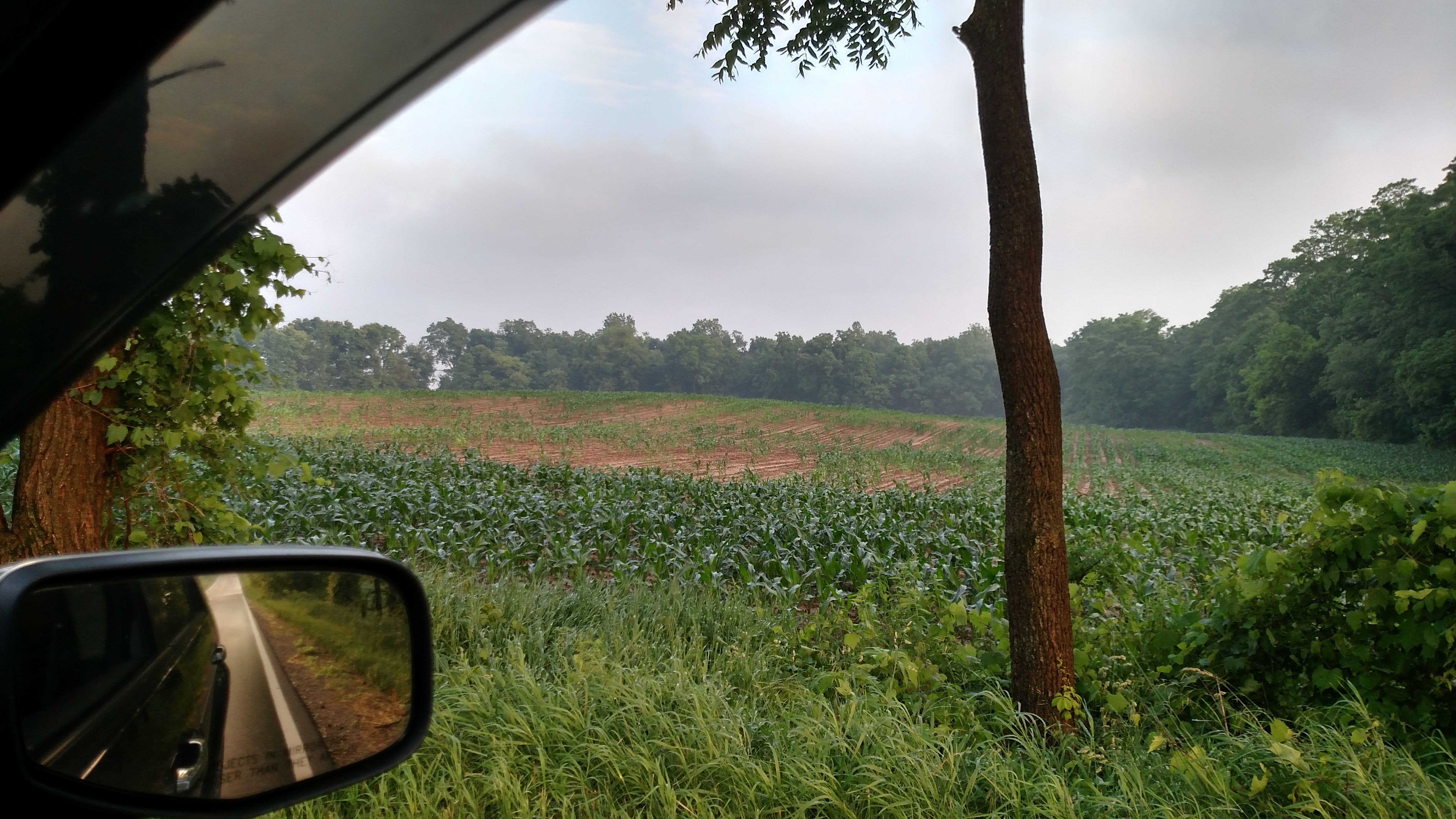Southwest Michigan field crop update – June 12, 2018
Heavy downpours have brought fieldwork to an abrupt end. We continue to have weed control challenges.

In a year where white grubs apparently can drown and lily pads are invading crop fields, you might think pests are likely to be a non-issue in soggy southwest Michigan. However, we continue to have challenges, particularly in the area of weed control. This situation has mainly been caused by the limited number of days for fieldwork, which has forced the many jobs that need to be accomplished into the same small-weather windows.
Weather update
Heavy downpours invaded the area over the weekend, bringing a period where fieldwork was moving along rapidly to an abrupt end. Extremely intense rainfall (2-4 inches per hour rate, but for shorter durations than 1 hour) from thunderstorms on Saturday, June 9 in south-central Cass County caused flash flooding, damaging crop fields, washing out roads and stranding people on the upper floors of their houses in some low-lying areas on Saturday.
The average rainfall since June 1 has been 1.86 inches at the Michigan State University Enviroweather stations in southwest Michigan, ranging from 1.4 inches to just under 3 inches. No-till fields showed less erosion damage by far than tilled fields.

Flooding in Cass County, June 9, 2018. Note all the corn residue washed off of the field.
Crop update
Corn fields generally come in three main growth stages in southwest Michigan. Early planted corn (late April–May 2), is progressing rapidly and is in the V6-V7 growth stage. Corn planted in narrow windows around May 8–9 are not far behind, driven by the high temperatures over the Memorial Day weekend. The next window was prior to Memorial Day and over the holiday weekend, with corn in the V3-V4 growth stage. Finally, we have the corn planted around June 5, which has emerged and is growing quickly.
Sidedress operations have been mostly completed on the early planted corn. This is also, by the way, mostly planted on the region’s lightest soils.
In general, insect issues appear to have been fairly light across the region. We are seeing elevated numbers of white grubs in some areas and sandhill crane damage to fields, but not too much in the way of cutworm or armyworm damage to early planted stands. Armyworm may still be in play with some of the later planted corn. Eric Anderson, St. Joseph County MSU Extension educator, caught 80 armyworm moths in a hartstack trap in southeast Kalamazoo County this last week.

Corn stand damage on a sandy knoll, typical of Asiatic garden beetle white grub feeding.
Pay particular attention to maximum crop and weed sizes in fields, particularly where pre-emergence herbicides were not applied. MSU Extension’s “Weed Control Guide for Field Crops” is an excellent reference for this information. For corn, it is located in Table 1D (pg. 39) and for soybeans, it is located in Table 2I (pg. 104) of the guide.
Given the late planting dates on some fields, consider the use and rates of applying certain herbicides that can persist in the soils for extended periods of time. There is potential to cause injury to next year’s crop if the fields are rotated to crops other than corn.
With weekend temperatures expected in the 90s by next weekend, both crop and weed growth is likely to explode over the next week.
Early planted soybeans have also moved forward quickly. I expect some may be approaching or even at R1 (flowering) in some locations along the Indiana border. Remember that R1 is an important cutoff period for many herbicides, including Liberty on Liberty Link soybeans. In walking fields early this week, it appears many weeds, and unfortunately marestail is among them, have taken advantage of the wet conditions to quickly put on size in infested fields. Keep an eye on weed size and prioritize fields before the weeds get too large to control. When glyphosate is applied to RR soybeans, use ammonium sulfate, sufficient rates of product, surfactant if the product is not “loaded” and adequate spray volume for the best chance to control rapidly growing weeds.
Given the chance for pop-up thundershowers in the forecast, keep an eye on the rainfast period for the products you plan to use. Mike Staton, MSU Extension soybean educator, has an excellent article on late soybean planting decisions.
Lots of fields have areas where the crops either drowned out or were not able to be planted due to standing water or extremely wet soils. Ideally, these areas could be planted later in the season. However, with the continuing rainfall, it appears increasingly unlikely this will happen. Keep the areas in mind for later-season weed control operations if the areas are at all accessible, which many will not be. Spraying these areas with glyphosate as the soils dry out can help keep weed species from gaining a foothold in your field, as well as potentially keeping them from producing seed.
Wheat grew quickly with the May heat despite the record cold spring. Fields I walked were either at or close to flowering on June 1 (Van Buren, Allegan and Kalamazoo counties). Overall, the crop looks reasonably good with no drought stress so far. Heavy rainfall has caused lodging in some areas. I saw little evidence of armyworm feeding in fields I walked.

Wheat at Feeke’s growth stage 10.5.1 (flowering), June 1, 2018, near Richland, Michigan.
Many wheat fields were treated with fungicides to control disease. Flowering ends this application period for many of these products.
Producers have struggled to find opportunities to put up hay, particularly if they are working on getting their other crops in. Producers that focused on hay have fared a little better. The season has been epic for alfalfa-grass mixed hay fields, particularly where orchardgrass has been in the mix. Potato leafhoppers are here, but not in huge numbers in the few fields I have observed.



 Print
Print Email
Email